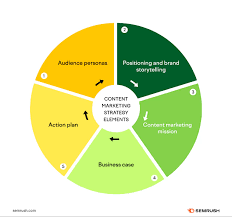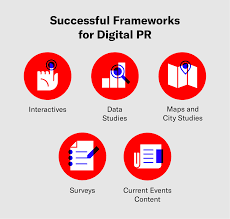Unlocking Success: The Impact of a Content Creator Agency on Your Brand’s Digital Strategy
The Power of Content Creator Agencies in Today’s Digital World
In the fast-paced and ever-evolving digital landscape, content has become king. With the rise of social media platforms, online marketing, and influencer culture, the demand for high-quality and engaging content has never been higher. This is where content creator agencies come into play.
A content creator agency is a team of creative professionals who specialise in producing various forms of digital content, such as videos, images, blogs, social media posts, and more. These agencies work closely with brands and businesses to develop compelling content strategies that resonate with their target audience.
One of the key advantages of working with a content creator agency is access to a diverse pool of talent. These agencies typically have a team of experienced writers, designers, videographers, and social media experts who can bring a unique perspective to your brand’s content creation efforts.
Furthermore, content creator agencies are well-versed in the latest trends and best practices in digital marketing. They understand what type of content performs well on different platforms, how to optimise it for search engines, and how to engage audiences effectively.
By partnering with a content creator agency, brands can save time and resources while ensuring that their content remains fresh, relevant, and impactful. These agencies can help businesses create a consistent brand voice across all channels and drive engagement with their target audience.
Overall, content creator agencies play a crucial role in helping brands navigate the complex world of digital marketing. With their expertise in storytelling, creativity, and audience engagement, these agencies are essential partners for any business looking to make a mark in today’s competitive online landscape.
Top 5 Advantages of Partnering with a Content Creator Agency
- Access to a diverse pool of creative talent
- Expertise in the latest digital marketing trends and best practices
- Saves time and resources for businesses
- Helps maintain a consistent brand voice across all channels
- Drives engagement with target audiences effectively
Challenges of Engaging a Content Creator Agency: Costs, Quality, Communication, and Control
- Costly service fees may be a barrier for small businesses with limited budgets.
- Quality of content may vary depending on the expertise and experience of the agency’s team members.
- Communication challenges can arise if there is a lack of alignment between the brand’s vision and the agency’s creative direction.
- Limited control over content creation processes and timelines, as agencies may have multiple clients to manage simultaneously.
Access to a diverse pool of creative talent
One significant advantage of partnering with a content creator agency is gaining access to a diverse pool of creative talent. These agencies typically boast a team of experienced writers, designers, videographers, and social media experts who bring a wealth of unique perspectives and skills to the table. This varied expertise allows businesses to benefit from fresh ideas, innovative approaches, and high-quality content creation across different mediums, ultimately enhancing their brand’s visibility and engagement with the target audience.
Expertise in the latest digital marketing trends and best practices
A significant advantage of partnering with a content creator agency is their expertise in the latest digital marketing trends and best practices. These agencies are well-versed in understanding the ever-changing digital landscape, including social media algorithms, SEO strategies, and emerging content formats. By staying abreast of industry developments, content creator agencies can help businesses create content that is not only engaging but also optimised for maximum reach and impact in today’s competitive online environment. Their knowledge of current trends ensures that brands can stay ahead of the curve and connect with their target audience effectively.
Saves time and resources for businesses
One significant advantage of partnering with a content creator agency is the ability to save valuable time and resources for businesses. By outsourcing content creation to professionals, companies can focus on their core operations and strategic goals without the burden of producing high-quality content in-house. This streamlined approach not only increases efficiency but also allows businesses to benefit from the expertise and creativity of content creator agencies, ultimately leading to more impactful and engaging content that resonates with their target audience.
Helps maintain a consistent brand voice across all channels
One significant advantage of partnering with a content creator agency is its ability to help maintain a consistent brand voice across all channels. By working closely with the agency’s team of creative professionals, businesses can ensure that their messaging remains cohesive and aligned with their brand identity. This consistency not only builds brand recognition but also fosters trust and loyalty among the target audience, ultimately enhancing the overall brand reputation and impact in the competitive digital landscape.
Drives engagement with target audiences effectively
Content creator agencies excel in driving engagement with target audiences effectively. By leveraging their expertise in storytelling, creativity, and audience understanding, these agencies craft content that resonates with the specific interests and preferences of the target demographic. Whether through compelling visuals, captivating narratives, or interactive experiences, content creator agencies have the ability to spark meaningful interactions and conversations that captivate and retain the attention of the intended audience. This targeted approach not only enhances brand visibility but also fosters a deeper connection with consumers, ultimately leading to increased brand loyalty and conversions.
Costly service fees may be a barrier for small businesses with limited budgets.
For small businesses with limited budgets, the cost of services provided by content creator agencies can be a significant barrier. The fees charged by these agencies may be out of reach for smaller companies, making it challenging for them to access professional content creation services. This financial constraint can hinder small businesses from leveraging the expertise and creativity of content creator agencies to enhance their online presence and engage with their target audience effectively.
Quality of content may vary depending on the expertise and experience of the agency’s team members.
The quality of content produced by a content creator agency may vary depending on the expertise and experience of the agency’s team members. While established agencies often have a diverse pool of talented professionals, including writers, designers, and videographers, newer agencies or those with less experienced team members may struggle to consistently deliver high-quality content. This variability in expertise can impact the overall effectiveness of content strategies and may lead to inconsistencies in brand messaging and audience engagement. It is essential for businesses to carefully assess the capabilities and track record of a content creator agency before engaging their services to ensure that they can meet the desired quality standards.
Communication challenges can arise if there is a lack of alignment between the brand’s vision and the agency’s creative direction.
Communication challenges can indeed arise within a content creator agency when there is a lack of alignment between the brand’s vision and the agency’s creative direction. In such cases, misunderstandings may occur, leading to discrepancies in the content produced. This can result in content that does not effectively convey the brand’s message or resonate with its target audience. It is essential for both the brand and the agency to establish clear communication channels, set expectations, and ensure that there is a shared understanding of the brand’s values and objectives to overcome this con effectively.
Limited control over content creation processes and timelines, as agencies may have multiple clients to manage simultaneously.
One significant drawback of working with a content creator agency is the limited control over content creation processes and timelines. Due to the nature of their business, agencies often have multiple clients to manage simultaneously, which can result in delays and challenges in meeting specific deadlines or accommodating last-minute changes. This lack of direct oversight can lead to frustrations for businesses seeking more immediate or tailored content solutions, as they may have to compete for attention and resources within the agency’s workflow.












